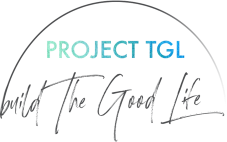Earlier this year, I made a mistake: I bought a fancy-pants planner I’d been hearing everyone rave about. “It’s so amazing!” they all said. “It helps me focus like nothing else!”
While I use Asana (a digital app) to track 98% of my to-dos, I felt like I needed a paper planner to track my big priorities.
Right from day one, the fancy-pants planner didn’t work for me. Don’t get me wrong, it was a good planner. It just didn’t fit with my workflow. The entire fancy-pants planner was structured around goal setting, and your Three Big Tasks each day.
I tend to focus on just One Big Task each day, and I’m not much of a pen-to-paper goal setter. (I have goals; I just don’t get much out of spending a bunch of time writing about them.)
I had bought the wrong planner. A couple of months later, I gave up on the fancy-pants planner and bought myself a fully customised Agendio and haven’t looked back.
Now we’re getting to the end of 2018 and you may be starting to think about buying a planner for 2019. But there are so. many. different. planners. out. there.
I want to save you the hassle (and expense) of making the same mistake I did.
So with that in mind, here are five questions to ask before committing to a paper planner:
How do I break my time up? Does this planner fit with that?
Is your day divided up into 30 or 60 minute appointments? Or do you get into your studio, knock out a few emails, and settle down to work deeply on one project all day? Do you block out chunks of time in advance for different tasks? Or do you have a long to-do list, start at Task 1, and see how you go getting through it? How many appointments do you have in a regular day, or a regular week?
Some planners have a separate sections for every hour of the day (during business hours, anyway.) This is great for those who block out each hour, or who have lots of appointments.
But pay attention to which hours of the day are listed: Are you a night owl who works until 9pm or midnight? If so, then don’t use a planner that only counts the hours up to 6pm. Do you start crushing it at 5am? Then don’t buy a planner that thinks life begins each day at 9am.
Other planners simply have a monthly calendar! (One-priority-per-day-with-only-two-or-three-appointments-a-week people, I’m looking at you.)
Still others have a rectangular space for each day of the week, with the whole week visible on a single spread. To be honest, I don’t know exactly who these are for. (They’re not for long-to-do-list people, since a decent to-do list would never fit in one of those boxes. A proper to-do list demands an entire page for each day.)
How will I integrate using this planner with any shared calendars or task lists I use?
If you have a family calendar on the kitchen wall, or a shared list of household chores with your partner, how will you integrate that with your planner?
Maybe you will copy any social engagements from the calendar into your planner once a week. Maybe you’ll write “chores” into your planner, as a prompt to refer to that shared list.
Plan this in advance.
I think one of the big reasons people abandon planners partway through the year is that they haven’t thought through how it will fit in with the other systems they already have in place.
Where will I use this planner?
Is this something that will sit on your desk, or something you will carry around with you everywhere?
Is it the right size and shape for your desk, your handbag, your briefcase, your glove box?
Does it have a ton of amazing features that you’ll never use because it’s actually just too heavy to bring anywhere with you?
Does the visual structure allow me to represent my deadlines?
If you have a few big annual deadlines (such as product launch dates), is there a logical space for you to track those? A year-to-a-view spread works great for that.
If you have lots of small deadlines, is there a more fine-grained way for you to track those?
When I was studying, I always bought planners with a weekly view. All seven days of the week were on the left-hand-page. The right-hand page had a complete list of my remaining assignments for the semester, organised by due date and colour-coded by area of study.
I needed to be looking at that list of deadlines every single week, so I bought a planner that accommodated that.
Does this fit with how I set priorities?
Do you set yourself yearly goals?
Weekly priorities?
A daily One Big Task or Three Big Tasks?
Make sure your planner has space for that.
As mentioned above, I’m a One Big Task per day kind of person. (Plus loads of little tasks.) When I customised my Agendio planner, I actually provided space to plan each day’s One Big Task twice.
At the beginning of each week, I use one page of my planner to write out One Big Task for each day of the coming week. This helps me to plan ahead, and to know that I’m working toward my main priorities for the week. But then life happens, and the week doesn’t always go as planned.
So I also have a spot, at the top of each day, to write out my priority task for that day. If all has been going to plan, then I that will be the same One Big Task as the one I planned at the start of the week. But everything doesn’t always go to plan. Sometimes things change, and I adjust as I go.
Physically writing out my priority task each day also helps to cement that this is what I should be focusing on today.
If you take these five questions into account, you’ll be well on the way to purchasing a planner than you won’t abandon by mid-February.
Happy shopping!
*Full disclosure: If you buy an Agendio planner using one of the links above, I’ll get a discount on my next purchase from Agendio.




